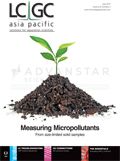New Gas Chromatography Products for 2016–2017
LCGC Asia Pacific
In this instalment, John Hinshaw presents an annual review of new developments in the field of gas chromatography (GC) seen at Pittcon 2017 and other venues in the past year.
John V. Hinshaw, GC Connections Editor
In this instalment, John Hinshaw presents an annual review of new developments in the field of gas chromatography (GC) seen at Pittcon 2017 and other venues in the past year.
For its 69th session 5–9 March 2017, the Pittsburgh Conference on Analytical Chemistry and Applied Spectroscopy (Pittcon) headed north to McCormick Place in Chicago, Illinois, USA. In sharp contrast to the many previous subzero sessions held in Chicago, the weather was unusually mild, so much so that I was able to enjoy a Sunday morning run along the Lakefront Trail. I passed by the 17th Annual Chicago Polar Plunge where hundreds of bewildered swimmers encountered water colder than the air. Attendance was up slightly compared to last year with more than 14,000 registered participants, 22% of whom came from 89 countries outside the United States. The exposition hosted 78 exhibitors from 37 countries, 141 of which displayed their products for the first time.
The technical programme continued to be a strong part of the conference: more than 2000 sessions were presented in 72 symposia, 89 oral sessions, 19 contributed sessions, six workshops, 56 poster sessions, and 15 awards. Among these were the 2017 LCGC Lifetime Achievement in Chromatography Award presented to Professor Pat Sandra (Research Institute for Chromatography), and the LCGC Emerging Leader in Chromatography Award presented to Dr. Deirdre Cabooter (University of Leuven).
Pittcon 2018 will meet in Orlando, Florida, 26 February to 1 March at the Orange County Convention Center, where participants likely, but not necessarily, will enjoy even balmier weather. The 2019 session is scheduled for 17–21 March in Philadelphia, Pennsylvania.
This annual “GC Connections” instalment reviews gas chromatography (GC) instrumentation, columns, and accessories shown at this year’s Pittcon or introduced during the previous year. For a review of new products in other areas of chromatography, columns, and related accessories, please see the “Column Watch” and “Perspectives in Modern HPLC” column instalments from the April 2017 issue of LCGC Europe (1,2) as well as the “Sample Prep Perspectives” column in the May issue of LCGC North America (3).
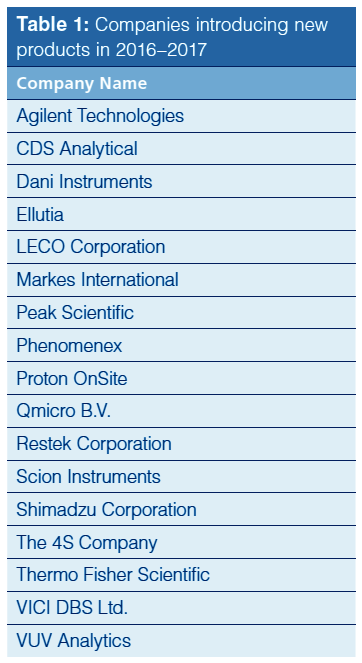
The information presented here is based on manufacturers’ replies to questionnaires, as well as on additional information from manufacturers’ press releases, websites, and product literature about the past year’s products, and not upon actual use or experience of the author. Every effort has been made to collect accurate information, but because of the preliminary nature of some of the material LCGC Asia Pacific cannot be responsible for errors or omissions. This column instalment cannot be considered to be a complete record of all new GC products introduced this year at Pittcon or elsewhere because not all manufacturers chose to respond to the questionnaire, nor is all of the submitted information necessarily included here because of the limited available space and the editors’ judgment as to its suitability.
GC: 2016–2017
As the gas–solid variety of GC attains its 70th anniversary in 2017, this past year had a number of notable advances in GC technology that clearly demonstrate its ongoing viability. Far from those early university experiments, some of the newest developments help remove a number of significant obstacles in routine GC while other advances deliver even higher performance to the gas chromatography–mass spectrometry (GC–MS) realm. The most significant development in GC instrumentation this year has to be Agilent’s new Intuvo 9000 GC system, designed for reduced time spent on routine tasks with minimized maintenance risks. The core Intuvo developments are outlined in the following tables. Laboratories that adopt the system will deploy columns in instrumentâspecific directly heated modules, but this should prove not to be a significant barrier to the multiyear cycle of instrument upgrades and replacements. Ellutia’s 500-Series GC systems implemented a hybrid airâoven column heating system, which supports resistively heated as well as conventionally heated columns. Qmicro displayed application-specific versions of their micro-GC platform, which is based on microelectromechanical systems (MEMS) for the inlets and detectors plus direct column heating. All three of these systems make use of customized column formats.
For GC–MS, the Exactive GC Orbitrap GC-MS system from ThermoâFisher Scientific, the GCMS-QP2020 GC–MS system and GCMS-TQ8050 tripleâquadrupole GC–MS system from Shimadzu, and the Pegasus BT GC–timeâofâflight MS system from LECO represent the latest advances in GC–MS technologies. Two new applicationâspecific offerings from Agilent in this area, the SureTarget GC/MS Water Pollutants Screener and the GC/MS Arsine Phosphine Analyzer, plus the EPA 8270D analyzer kit from Thermo Fisher Scientific, all emphasize the ongoing march towards routine application of highâperformance GC–MS for standardized methods.
Two optical spectroscopy GC detectors were announced during the past year. Continuing their advancements in vacuum ultraviolet spectroscopic detection for GC, VUV Analytics expanded the
wavelength range of its VGA-101 detector as well as enabling series coupling with some conventional GC detectors. From Dani Instruments, the DiscovIR–GC Solid Phase GC–FTIR detector produces solid-phase transmission infrared (IR) spectra of eluted GC components.
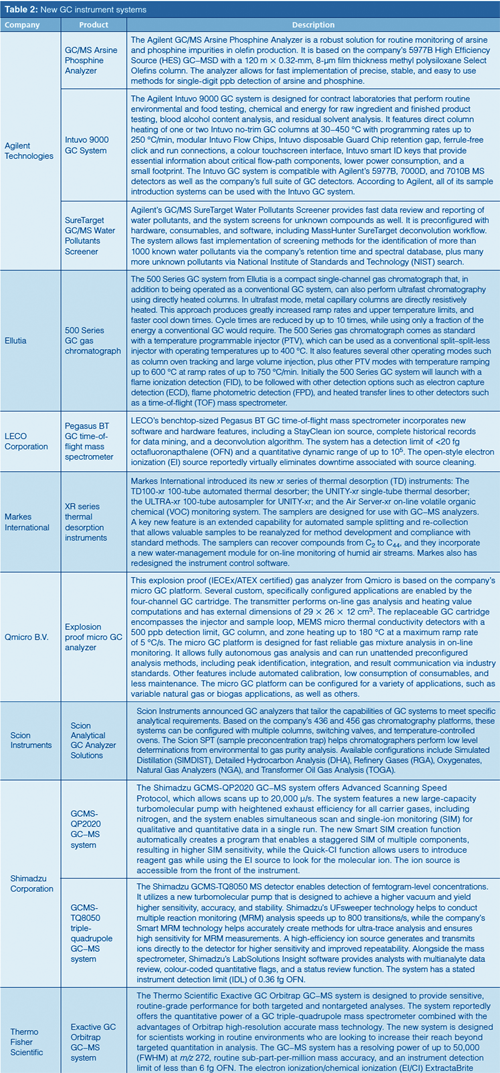
A number of sampling accessories round out the newest instrumental offerings, including the XR Series of thermal desorption instruments and HiSorb extraction probes from Markes, the 6000 Series Pyroprobe pyrolyzers from CDS Analytical, and the Master MTAS robotic autosampler platform from Dani, all of which advance their respective sampling tasks with new or improved capabilities.
The zone of general GC accessories was not left out this year, either. The ADM flowmeter from Agilent has some new calibration capabilities that minimize downtime. New Thermolite septa and Topaz inlet liners from Restek are designed to extend trace-level analysis capabilities. Restek also now offers an electron ionization (EI) filament replacement for a number of Agilent MS detectors. There was a large crop of new gas generators, too: VICI DBS entered this segment with several offerings for GC systems, Proton OnSite showed a new G-Series family of hydrogen generators, and Peak Scientific has a new nitrogen generator.
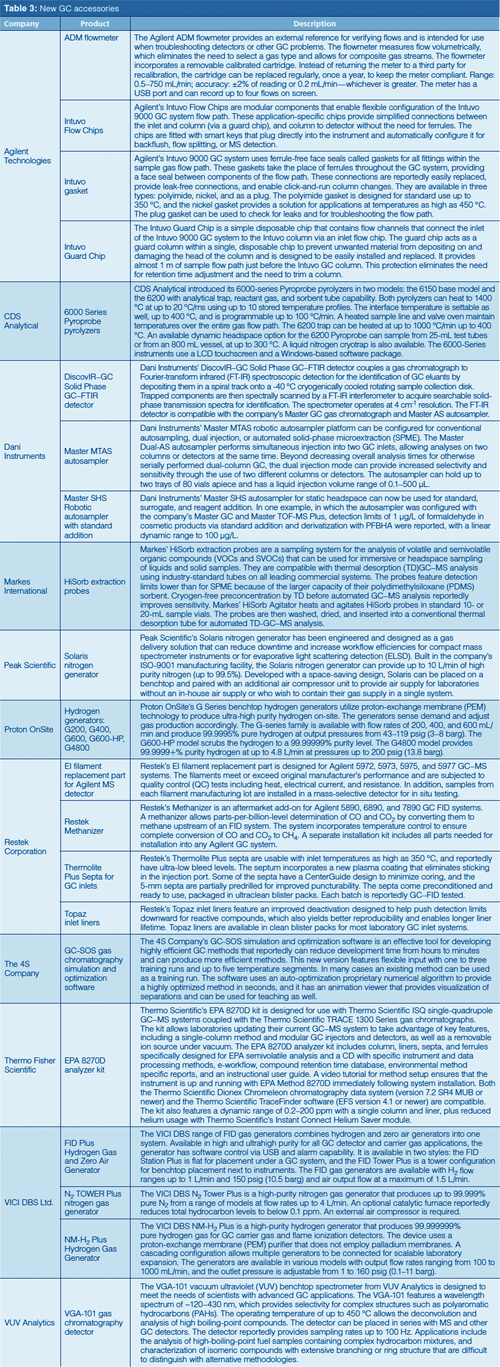
In GC columns, Agilent and Phenomenex introduced some new polar columns that offer increased stability and upper temperature limits as well as application-specific selectivity tailoring. Agilent’s new Intuvo System modular columns are being made available in a variety of common dimensions and stationary phases; the modules feature a quick-connect planar cage that does not use conventional ferrules.
2016–2017 was another very active year in GC that again emphasized the pivotal role that small-molecule and volatile component analyses fulfil in the fields of separation science. As we spin around to Pittcon 2018, I expect to be pleasantly surprised by more new developments and innovations.
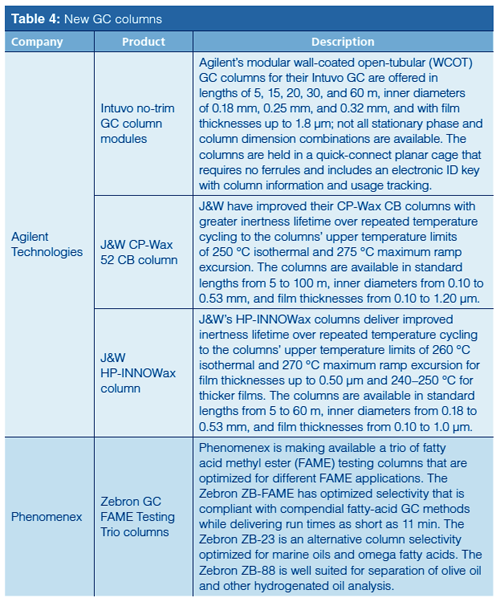
Acknowledgements
I would like to thank the manufacturers and distributors that kindly furnished the requested information, which allowed a timely report on new product introductions over the past year. For those manufacturers who did not receive a “New Products” questionnaire this year and would like to receive one and be considered for early inclusion into the 2018 new GC and related product introductions review, as well as the other related review articles to be published in LCGC, please send the name of the primary company contact plus the mailing and e-mail addresses to Laura Bush, Editorial Director, LCGC and Spectroscopy, UBM Americas, 485 Rte. 1 South, Bldg. F, Suite 210, Iselin, NJ 08830, USA, Attn: 2018 New Chromatography Products. The questionnaire will be sent out later in 2017.
References
- D.S. Bell, LCGC Europe30(4), 196–207 (2017).
- M.W. Dong, LCGC Europe30(4), 208–218 (2017).
- D.E. Raynie, LCGC North Am.35(5), 296–305 (2017).
“GC Connections” editor John V. Hinshaw is a Senior Scientist at Serveron Corporation in Beaverton, Oregon, USA, and a member of LCGC Asia Pacific’s editorial advisory board. Direct correspondence about this column to the author via e-mail: lcgcedit@lcgcmag.com
Altering Capillary Gas Chromatography Systems Using Silicon Pneumatic Microvalves
May 5th 2025Many multi-column gas chromatography systems use two-position multi-port switching valves, which can suffer from delays in valve switching. Shimadzu researchers aimed to create a new sampling and switching module for these systems.
Troubleshooting Everywhere! An Assortment of Topics from Pittcon 2025
April 5th 2025In this installment of “LC Troubleshooting,” Dwight Stoll touches on highlights from Pittcon 2025 talks, as well as troubleshooting advice distilled from a lifetime of work in separation science by LCGC Award winner Christopher Pohl.
Study Examines Impact of Zwitterionic Liquid Structures on Volatile Carboxylic Acid Separation in GC
March 28th 2025Iowa State University researchers evaluated imidazolium-based ZILs with sulfonate and triflimide anions to understand the influence of ZILs’ chemical structures on polar analyte separation.

.png&w=3840&q=75)

.png&w=3840&q=75)



.png&w=3840&q=75)



.png&w=3840&q=75)
